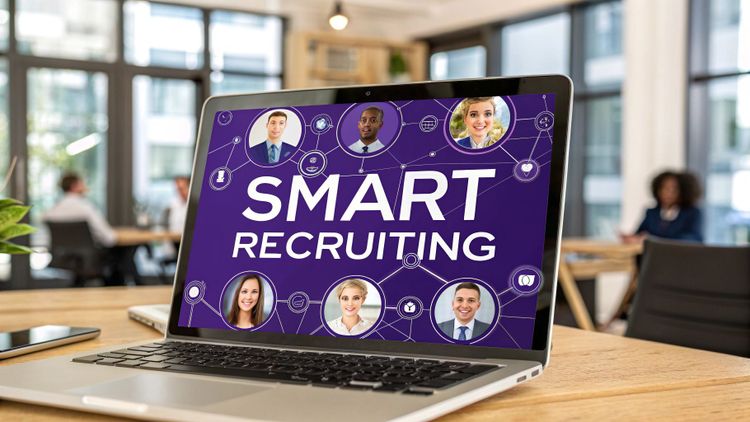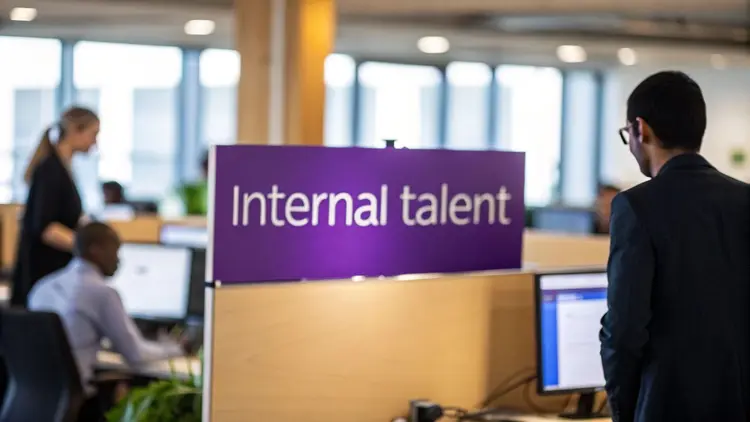Industry Trends
Why Smart Companies are Abandoning Traditional Hiring in Favour of Virtual

Virtual hiring has been around for some time, but the pandemic forced it into the mainstream.
Although a lot of places physically closed during the Great Lockdown, the economy still trudged on, making other hiring forms necessary.
But more than just a stop-gap measure, employers are now beginning to see the benefits that virtual hiring brings to the table.
In a survey of 500 UK professionals conducted by FusionBusiness, most HR decision-makers have found benefits in the virtual hiring model, with as many as 64% saying that they’re willing to continue this recruitment mode.
In this article, we’ll explain why smart companies are abandoning traditional hiring in favour of virtual.

The Problems with Traditional Hiring
Of course, no process is perfect, be it traditional or virtual hiring.
That said, since traditional hiring has been around for a long time, many were stuck with its imperfections — not daring to try out something new in fear of breaking something that’s working okay.
However, the pandemic brought its issues all out into the open. In this new arrangement, companies were forced to deal with and find solutions for all the long-endured problems of traditional hiring.
Here are just some of them.
1. Resource-Intensive
There’s a lot of work and resources that go into sourcing, hiring, and onboarding new employees.
Even a single vacancy can require multiple people working over the course of several weeks or even months until it’s filled. The only other option is to hire a recruitment agency, which is typically expensive and comes with its own set of limitations.
2. Inconvenient and Time-Consuming
Not only is traditional hiring resource and time-intensive for employers, but it can also be very stressful for candidates and new hires alike.
Traditional hiring requires the candidates to be physically present almost every step of the way, from submitting documents to attending multiple interview rounds while probably juggling a full-time job and social commitments.
If not handled well, the undue hassle can drastically harm the candidate experience, especially if your company has an extensive hiring volume and frequent turnover rates, which means less time for streamlining operations.
3. Impersonal
This might seem counterintuitive at first — after all, isn’t traditional, in-person recruitment more personal since employer and employee meet each other in the room? Not necessarily.
Although this might be true under ideal circumstances, the fact is that hiring managers and recruitment agencies want to churn through as many candidates as they can.
Yes, employers and candidates could meet, but genuine human interaction is often sacrificed to expedite the process. All too easily, many employers unconsciously end up treating candidates like numbers instead of individuals.
4. Prone to human errors
As hard as we try to prevent them, workplace errors can happen. If you’ve ever forgotten to send an email follow-up or have spent a good half of your afternoon looking for a misplaced document, then you know exactly what we mean.
However, the fast-paced world of the recruitment industry is one place where even the smallest of errors can compound, resulting in lost opportunities or a decline in candidate experience.
If you don’t want this to happen to you, then it’s in your best interest to reduce the chances of human error as much as possible.
5. Susceptible to unconscious bias
Many people don’t know this, but unconscious biases are present in all of us.
Unlike other outward forms of bias, unconscious bias is particularly dangerous because it can have real, lasting effects, and yet we, ourselves, don’t know that we’re doing it.
Traditional hiring is particularly vulnerable to unconscious bias since humans handle most parts of the process. We’re naturally wired to rely on our interpretations of a small piece of data, such as CVs, and this can lead to treating candidates unfairly.
6 Reasons Why Companies Are Digitising HR
As you can see, there are many problems in traditional hiring that need to be addressed. The solution, at least in part? Virtual hiring.
Here are six reasons why companies are digitising HR.
1. Speeds up the process
Inefficiency is one of the most pressing problems of most recruitment processes. Even the first step of sourcing enough candidates can take weeks or months unless you’re posting on many different job boards.
Not to mention, there are plenty of other steps in the recruitment process: communication, interview, evaluation, and even the onboarding process — all of these take up a lot of time and precious resources if done manually.
However, digitising HR can solve this issue. For instance, SeeMeHired allows you to post to over 20 free and paid job boards in seconds, saving you a massive amount of time compared to doing it manually. You can also use job post templates, so you never have to start from scratch whenever you want to post a new job application.
With this, not only can you speed up your hiring process, but you can also reduce inefficiency and ensure your applicants don’t lose interest.
2. Enhances candidate experience
Candidate experience is an essential aspect of your application process.
According to LinkedIn’s Talent Trends report, a bad interview can negatively impact the impressions of 83% of talents about a company or role that they applied for. Meanwhile, 87% said that a great interview experience would positively impact their impression.
Digitising your hiring process enhances the candidate experience because it removes most of the negative aspects of the traditional process, such as slow responses and lack of updates.
In fact, bad communication is one of the main factors that negatively affect candidate experience. CareerBuilder reveals that in over 500 UK employees surveyed, about 50% want their recruiters to call them for updates, while at least 78% would like regular updates. Even if they don’t move up to the interview stage, about 47% would still like to hear from the company.
For example, SeeMeHired solves this issue with automated updates at every part of the recruiting process. This way, your applicants will get the communication they deserve without you having to exert additional effort.
In short, digitising your recruitment process keeps things moving along and makes it easier to involve your candidates every step of the way to improve their experience.
3. Makes diversity and inclusion efforts easier
As mentioned previously, traditional hiring is particularly vulnerable to unconscious bias. This is because diversity and inclusion efforts are more difficult to implement when hiring managers can see candidates face-to-face.
By digitising your HR systems, your processes become more data-centric. After all, digital systems measure only the relevant metrics without the unnecessary biases that humans have.
Some of the best ATS systems in the market can even implement a full diversity and inclusion module, which helps hiring managers to make unbiased decisions.
SeeMeHired, for instance, gives you the option to be a Diversity Ambassador, which you can achieve with just the click of a button. With this, you’re enabling the Diversity and Inclusion Module, making the shortlisting process completely anonymous.
This means you won’t get to see the names and appearances of the shortlisted applicants–only the relevant data on their applications, such as their qualifications, skills, and experience.
In addition to this, SeeMeHired also has an intelligent shortlisting feature, which can help you adjust the relevance of specific metrics during the application period. With this, you rely heavier on data analytics and leave little room for biases to flourish.
4. Saves time from doing menial office work
HR executives often spend time doing redundant administrative work.
Switching to virtual hiring can save time by automating all the menial tasks around the office such as email follow ups, printing and organising documents (as they are all digital).
With this, you have more time to engage in the meaningful things that add a touch of human interaction to your recruitment process. For instance, you can personalise some messages, or you can spend more time creating a healthier company culture.
By digitising your HR, you can spend fewer hours on unimportant stuff and more time on what truly matters.
5. Allows you to hire from outside your area
With traditional recruiting, even if you post on social media and international job boards, there’s a high chance that your candidates will only be limited to those living in nearby places.
This can obviously affect the talent pool accessible to you. If you want only the best, you shouldn’t be content with this limitation.
Luckily, unlike traditional hiring, virtual hiring has no geographic limits.
Virtual hiring allows you to access the whole world in the blink of an eye. It also makes it easier to expand the people involved in the hiring process because it enables relevant parties, from HR decision-makers to top-level executives, to join in the interview from the comfort of their own homes.
Recruiting for remote positions virtually has never been easier.
6. Lowers recruitment and hiring costs
Since virtual recruiting saves you plenty of time and resources, you can minimise the cost of your recruitment and hiring processes.
For one, virtual hiring events cost much less than physical job fairs. You don’t need to rent a venue, assign employees to the site and purchase materials and equipment for the booth.
More than that, speeding up your hiring makes it cheaper to fill roles and reduces the cost of not filling a vacancy - which is a key influence on business productivity.
Switching to Virtual Hiring with SeeMeHired
Traditional hiring has served us well for decades, even centuries. However, it has always had plenty of imperfections – imperfections that can be mitigated or even solved with our current level of technology.
On the other hand, virtual hiring may sound like a scary notion at first, but there’s a lot that can be gained from it. From cutting costs to making processes more efficient, the benefits of virtual hiring are undeniable.
If you want to experience this higher level of productivity for your company, SeeMeHired is here to help. Book a free demo to learn about our ATS here.































